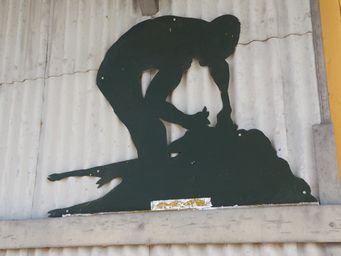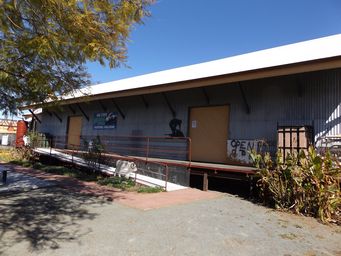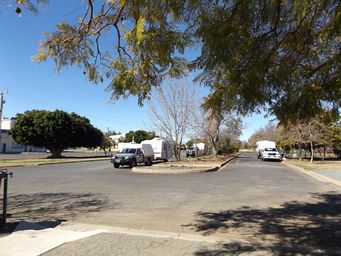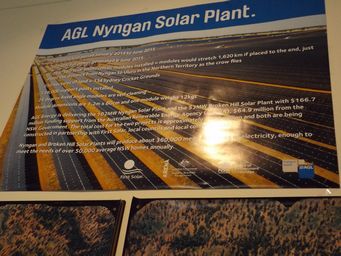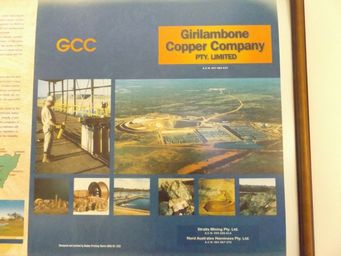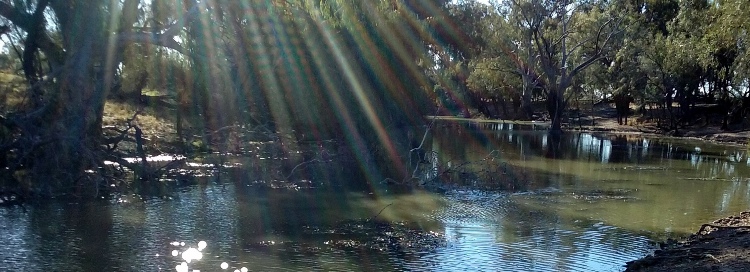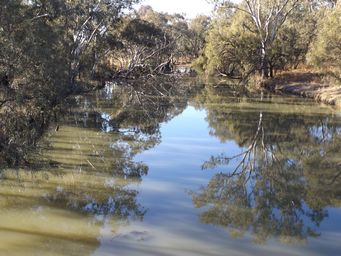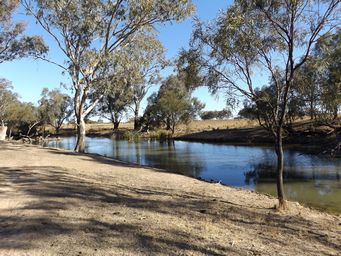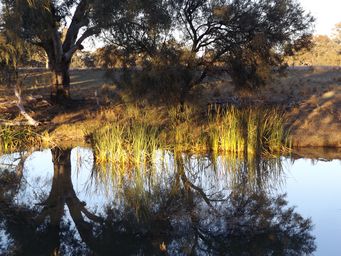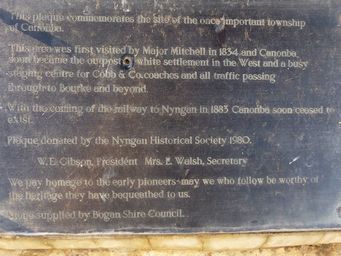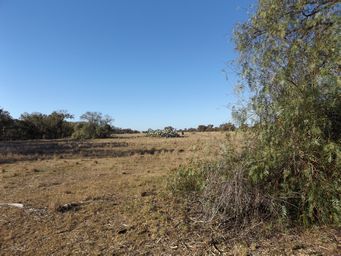Australia So Much to See
New South Wales - Nyngan and the town that preceded it
From the early 1840s until the mid eighties, a village grew and flourished here, servicing Canonba Station and other properties, as well as Cobb and Co. travellers.
Canonba was the only ‘town’ that predated the railway. The village was mapped
out for both sides of Duck Creek, but it was 1873 before a bridge was built across the waterway. In the early 1880s there were
about four hotels, three or four banks, various stores and tradesmen, a police station, a telegraph and money-order office, and representatives
of churches.
We had seen a station complex set well back from the other side of the road before we crossed the bridge, and evidence of earlier housing nearer the road from the remnant vegetation.
So next morning we walked back across the bridge to investigate what we had seen. We had by chance come to the site of the historic town of Canonba, which in the 1800s was a township and a regular Cobb and Co coach stop.
Now there is little more to remember the town than two pepper trees, a row on Yuccas,
and a memorial plaque to commemorate the town and pay homage to the early pioneers. The area is now used as a picnic area and
a camping ground. Fishing in the creek is also popular.
Looking upstream from the Bridge over Duck Creek (below) in the early morning.
Nyngan boasted having the largest solar power plant in the southern hemisphere at the time of our visit in 2017, covering an area of 250 hectares and producing 102 megawatts.
This 2015 AGL project, combined with their Broken Hill solar power plant, cost $440 million to construct. The Broken Hill solar power plant produces 53 megawatts.
Then the Western Railway bypassed Canonba, and where the railway crossed the Bogan River the town of Nyngan grew. The Canonba populace,
goods and public institutions were then all moved to Nyngan. By 1890 Canonba towhsite was practically empty (at right).
Canonba
is sometimes spelt as Canonbar or Cannonbar. The name Canonba may be derived from a local language word for the shingle-back
lizard (Tiliqua rugosa). Early settlers recalled the word as Carringbung, meaning 'Place of the Shingleback Lizard'.
In
its early days, part or all of the settlement was known as Brownstown, after the pastoralist John Brown, on whose land it was situated.
Resources
Nyngan Visitor Information Centre
Bogan Shire Council – Visitor’s guide
Flood Memorial Park, adjacent to Mid-State Shearing Shed Museum, has toilets, a dump point and room for around eight rigs (at right).
This is also an overnight rest area, and is situated between the Mitchell Highway and the railway line with a pedestrian overpass giving easy access to the Nyngan Visitor Centre and Museum on the other side of the railway lines.
We missed seeing through
the Mid State Shearing Museum (above) as it is only open in the mornings.
Discovery of copper at Girilambone in 1875. Thomas Hartman, one of the discoverers of copper at Cobar in 1870, was travelling
from the Bogan River to Cobar and camped under the stars at some ‘gilgai’ water holes near Girilambone Hill. He observed a small
outcrop with copper carbonate
stains and although not initially impressed by the find, he collected a sample to take to
Cobar.
On the 24 March 1881 the Girilambone Copper Mining Company Ltd was formed. By early 1882 the township of Girilambone had
quickly grown to a booming centre, with a population of about 500,
